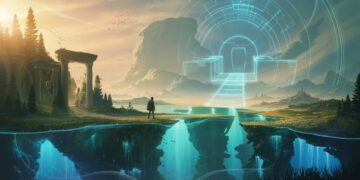Iceland thriving art scene offers a diverse world of style and subject matter. Art-interested travelers should make time to discover the many exhibitions and experiences.
Sarah Schug dove into the exciting art scene of Iceland together with photographer Pauline Miko to create the book Isle of Art. We catch up with her to learn more about this adventure.
The Museums Galleries
The hub of Iceland’s art scene is in the capital city, Reykjavik. The town has three major art museums – Hafnarhus, Kjarvalsstadir, and Asmundarsafn. In addition, there are several independent galleries, including BERG Contemporary, i8 Gallery, KALK, Harbinger, and the Wind and Weather Window Gallery. Other art spaces nationwide include outdoor installations run by local municipalities and artist-run exhibition spaces.
Iceland’s art culture is free-spirited creativity, collaboration, and playfulness. Many artists are self-taught and have no interest in selling their work – a different mindset from most in the art world. This inclination toward collaboration and playfulness is evident in the many festivals and events throughout the year, including Reykjavik Arts Festival, Sequences Real-Time Art Festival, DesignMarch, and more.
A walk around the streets of Reykjavik will reveal a wide variety of sculpture gardens, museums, and private art studios that are open to the public and are best for your Iceland travel goal. The new Marshall House complex in a former fish factory combines many of the city’s commercial and artist-run galleries under one roof. This is a big vote of confidence in an artistic scene that has come a long way in recent years. It’s also a testament to the energy that is bubbling under the surface of this small island nation.
The National Gallery
Iceland’s unique natural landscapes and cultural traditions have inspired artists to create in various media. This creative energy is reflected in the country’s thriving art scene, and there are numerous museums and galleries where you can experience it.
One of the most recognizable museums is the National Gallery, which has a vast collection of works from several famous Icelandic artists, including Erro and Kjarval. The gallery’s ‘Making of a Nation – Heritage and History in Iceland’ exhibition is especially impressive and offers an immersive look at the country’s past from ancient to modern times.
The gallery also features a long-term display called ‘Points of View’ that presents contemporary works alongside historical artifacts to form an essay on Icelandic visual culture. The museum has many paintings, sculptures, and photographs worth seeing.
Another gallery is Marshall House, which houses the country’s most significant artist-run and commercial galleries in a former fish factory. It’s a stamp of approval and a vote of confidence for an art scene that can become an essential player on the world stage.
If you want to see a different side of the city, head to the area around the docks. Here you will find a different style of street art with more of a photorealistic feel, with stunning work by Guido Van Helten, among others. The artworks are more prominent here and often cover the sides of buildings rather than smaller shop fronts in the town center.
Outdoor Art
In addition to the galleries and museums that make up Iceland’s art scene, several outdoor pieces are spread throughout the city. Some are monuments to historical figures like the renowned sculptor Sigurjon Olafsson, while others represent essential milestones in Icelandic history or serve as markers for cultural events. You’ll also find some abstract sculptures, such as The Partnership, which depicts an arrow pushing its way through the earth by artist Peter Bjarnason and is dedicated to the 50th anniversary of Iceland’s diplomatic relations with the United States.
The newest addition to the Reykjavik art landscape is the Marshall House. This contemporary flagship arts complex and architectural gem combines many of the city’s most prominent artist-run spaces, including Kling & Bang, Living Art Museum, and BERG Contemporary, under one roof. Its arrival is a vote of confidence for the intimate Icelandic art community and a confirmation of a widely-held feeling that the country’s small scene is on the verge of significant growth.
To understand how the island’s intimate art scene works, TLmag partnered with University of Kansas professor Barbara Kerr to conduct extensive interviews with many local artists, curators, and collectors. The result is the book Isle of Art. This 256-page journey introduces Iceland’s exciting art scene with conversations with artists, musicians, and other creatives about their highs and lows, challenges, and what keeps them creating.
Street Art
Iceland has a tiny population but an enormous creative output. The island nation is bursting with ideas, talent, innovation, and experimentation in music, literature, visual art, and film.
Sculptors Einar Jonsson and Sigurjon Olafsson have left their mark on the nation’s culture, while painter Kjarval is known for his dreamlike canvases of Icelandic landscapes and folklore. The nation’s unequaled natural beauty has inspired several photographers, including Ragnar Th Sigurdsson.
In addition to three city museums, there is a large number of galleries that focus on contemporary art. BERG Contemporary in an old harbor warehouse, Hafnarhus, and the Asmundarsafn home and studio of sculptor Asmundur Sveinsson are among those that offer a diverse range of works. Down in the city center, the eclectic Gallery 8 represents 24 artists and is worth visiting to browse its offerings.
The dynamism of the local design industry is also on show in the country’s burgeoning fashion and furniture sector. Icelandic designers are riding a unique wave of creativity, often fusing elements of Nordic tradition with an utterly distinctive twist. Serena Perrone, for example, offers two prints that tie together impressions of the icy north with her family’s historical home in Sicily.



















